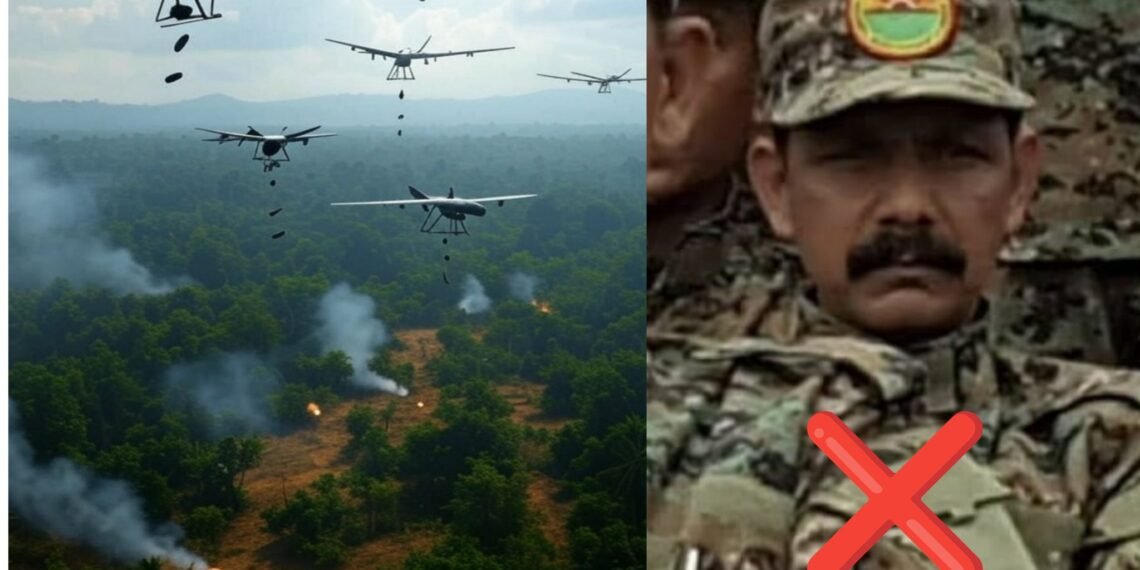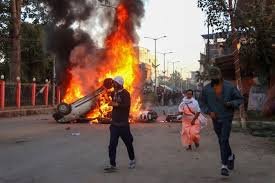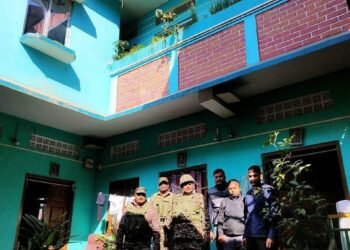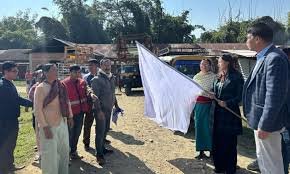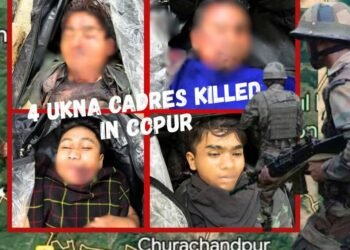BY Navin Upadhyay
New Delhi, July 14, 2025 — In what may be one of the most significant cross-border counter-insurgency operations in recent years, the Indian Army is reported to have launched a massive drone strike on July 13 targeting militant camps of the United Liberation Front of Assam-Independent (ULFA-I) inside Myanmar’s Sagaing Region.
According to intelligence sources and reports from local monitors, approximately 100 drones were deployed in a coordinated offensive against at least four known ULFA-I hideouts, including the Eastern Command Headquarters at Hoyat Basti and the group’s notorious 779 Camp in Waktham Basti. These camps have long been used for guerrilla training, operational planning, and safe haven by ULFA-I cadres operating across India’s Northeast.
#BREAKING 🚨 ‼️ Massive attack by Indian Army on ULFA camp across the border in Myanmar
Around 100 drones used to target the hideout
Multiple ULFA militants eliminated, including top commanders
Even ULFA’s so-called Major General Nayan Assam has been killed in the strike. pic.twitter.com/Bid6HBjiBq
— M Geopolitics (@tmgeopolitics) July 13, 2025
High-Value Target Believed Hit
Unconfirmed reports suggest Lt. Gen. Nayan Asom, a top ULFA-I commander responsible for training and operations, may have been killed in the strike. The attack on Hoyat Basti was reportedly the most intense, with several high-precision drone strikes aimed at leadership structures and logistics hubs.
READ: Tibet’s Tragic Preschools (Part-2): Mandarin, Mao, and Memory Loss
The NSCN-K, or National Socialist Council of Nagaland–Khaplang faction, which shares logistical networks with ULFA-I in the region, is also believed to have suffered collateral hits in the operation. While exact casualty numbers are not available, multiple NSCN-K cadres are feared dead, according to local sources.
NSCN-K has historically maintained a presence in northern Sagaing and Kachin states, offering safe passage, training, and joint operations with other Northeast insurgent outfits, including ULFA-I and PLA-Manipur. The faction has previously resisted India’s peace talks and remains one of the more hardened armed groups in the region.
The drone strike reportedly took place in the Sagaing Region, a remote, forested corridor bordering India’s Nagaland and Arunachal Pradesh. This area has become increasingly lawless in recent years due to the collapse of Myanmar’s central authority following the 2021 military coup.
Myanmar’s junta, preoccupied with internal resistance from ethnic armed groups and the parallel National Unity Government (NUG), has largely lost control over border regions. This security vacuum has enabled Indian insurgent groups like ULFA-I, NSCN-K, and others to regroup, recruit, and launch operations from Myanmar territory with relative impunity.
India has long maintained informal understandings with the Myanmar military (Tatmadaw) to carry out “hot pursuit” or joint operations, though official coordination has waned post-coup.
READ: Manipur Jail Violates Kuki Detainees’ Rights, Alleges KOHUR
As of now, there is no official confirmation from either the Indian or Myanmar governments. When contacted, an Indian Army spokesperson stated: “We have no information to share on this matter at this time.”
The Myanmar junta, which faces international isolation and limited control over the Sagaing region, has also remained silent. Local sources in Myanmar reported aerial activity and explosions, but independent verification remains difficult due to access restrictions and ongoing conflict.
If confirmed, the July 13 strike marks a significant evolution in India’s cross-border counter-insurgency doctrine, showcasing the Indian military’s increasing reliance on unmanned aerial platforms for targeted operations deep inside hostile territory.
It also sends a strong signal amid rising ULFA-I activity in Assam and recent intelligence suggesting renewed recruitment and extortion efforts by the group across Upper Assam districts.


